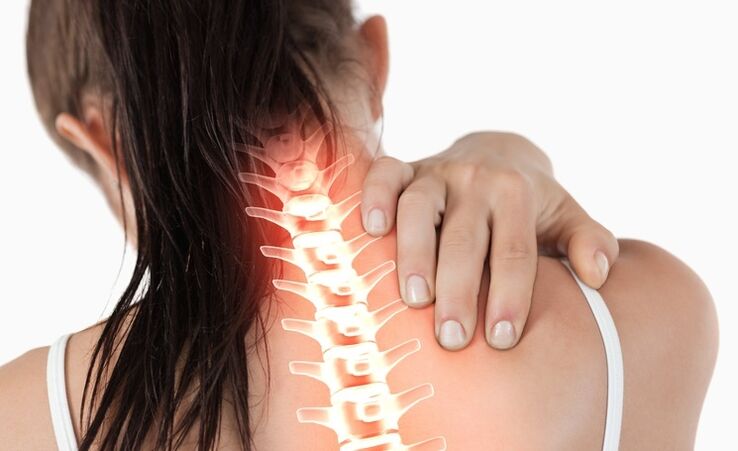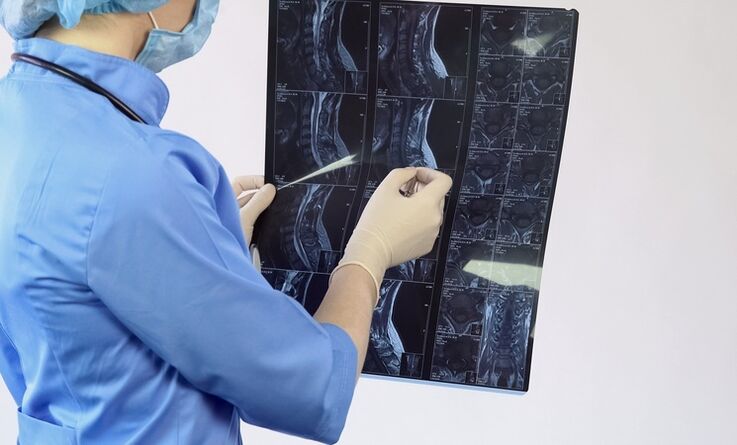
Causes of osteochondrosis
- Low physical activity,
- susceptibility to the disease,
- increasing static and dynamic loads,
- Impaired metabolism,
- unhealthy diet
- hormone imbalance,
- bad posture,
- pressure.
Symptoms of cervical osteochondrosis

reflex syndrome
myoadaptation syndrome
compression syndrome
- Radiculopathy - nerve root syndrome;
- Myelopathy - spinal syndrome;
- Neurovascular syndromes.
How does osteochondrosis develop?

- Stage 1- Instability of the vertebrae occurs, they shift and destroy cervical lordosis - a curvature of the spine with the convex side facing forward.
Symptoms in the first stage are mild. People may notice that their neck begins to hurt more frequently and tire more quickly. - Phase 2 and Phase 3— The intervertebral space is reduced and the vertebrae are compressed. During these stages, protrusions and intervertebral hernias appear, as well as anterior bony growths - osteophytes.
The difference between stages two and three is the severity of these changes. The third stage is characterized by annulus fibrosus rupture and disc herniation. - Stage 4- The appearance of posterior osteophytes threatens the integrity of the spinal cord. The patient's coordination is impaired and he often experiences dizziness. At this stage, irreversible consequences can occur, leading to disability.
Treat osteochondrosis at home

Surgery
- The spinal cord is compressed by hernias, displaced vertebrae, osteophytes, or other pathological conditions.
- Severe pain syndrome lasts for a long time.
- Medication and physical therapy continued for more than 3 months but still had no effect.
Prevent osteochondrosis




















